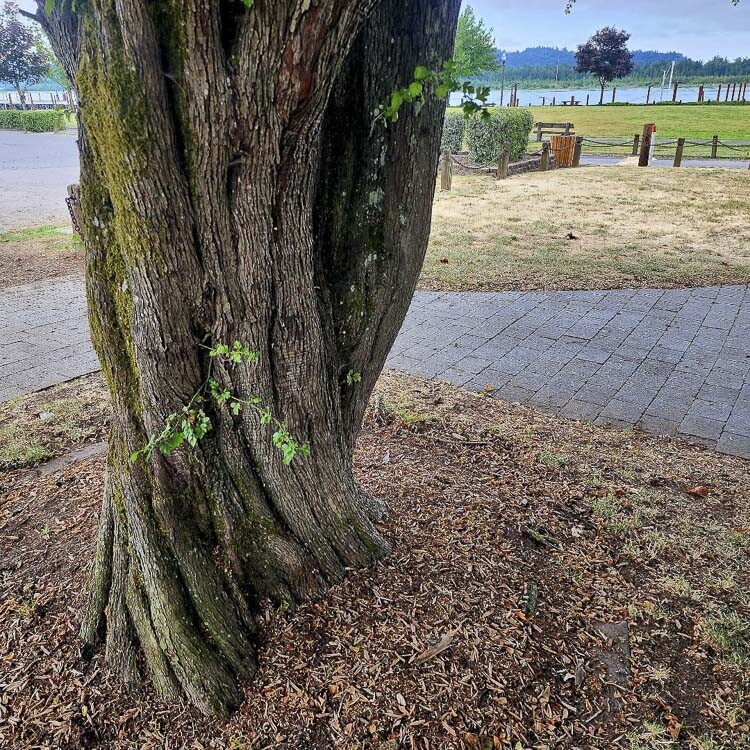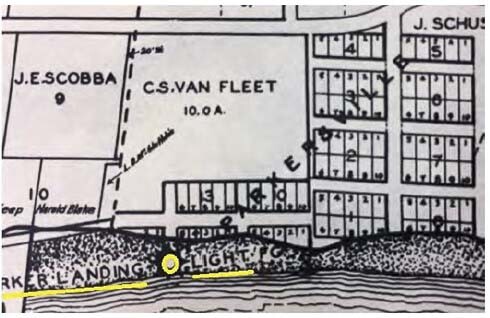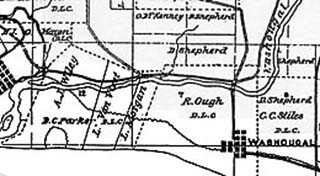
The tree is in the Parkersville national, state and county registered historic and heritage site
WASHOUGAL — A local tulip tree has been selected to receive Clark County Heritage Tree status and joins a heritage apple grove, heritage cherry tree, and heritage walnut tree at the Parker’s Landing Historical Park in Washougal. The Washington State University Extension Master Gardener Heritage Tree Program keeps a list of significant trees in unincorporated Clark County. Master Gardener Erika Johnson coordinates the Heritage Tree nominations.
The park’s tulip tree qualified for the heritage distinction for the following reasons. The tree is in the Parkersville national, state and county registered historic and heritage site. Today the tree stands at a significant size and provides beauty and shade for park visitor enjoyment. It is the larval host to the Tulip Tree Silk Moth and Eastern Tiger Swallowtail.

Indigenous people used the inner bark of the tulip tree medicinally as worming medicine, antiarthritic, cough syrup and cholera remedy. Tulip tree’s massive trunks provide valuable soft wood. Early residents hollowed out a single log to make a long, lightweight or dugout style canoe. This wood is softer than cedar or cottonwood.
The tulip tree is a favorite nesting tree for birds. The flowers attract hummingbirds and have noteworthy value to honeybees. They grow 150 feet or taller and have distinctive, star-shaped foliage. The leaves are waxy and smooth, and dependably turn bright gold in fall. The showy, yellow-orange, tulip-like flowers are often missed because they are up 50 ft. or higher in the tops of trees. The cone-shaped seed heads remain after the leaves have fallen.

A shade-intolerant species, the beautiful tulip tree, Liriodendron tulipifera, is known by the common names Tulip Tree, Tulip Poplar, and Yellow Poplar, and is in the Magnolia Family. The deciduous tulip tree’s medium to narrow crown spreads with age.
The tree stands at Parker’s Landing Historical Park, location of the first permanent settler in the state of Washington, David C. Parker, who arrived with his family in 1844 while the British still held Fort Vancouver and claimed the land north of the Columbia River. He added a dock called Parker’s Landing, a ferry to Lady’s Island, and the town of Parkersville, platted by Parker on May 1, 1854, all significant “firsts” at this site that later grew to the towns of Washougal and Camas.


When Parker died in 1858, Lewis Van Vleet, Sr. was Parker’s donation land claim and estate administrator. Van Vleet moved from his homestead in Fern Prairie to Parkersville. He doubled Parkersville size in 1878 and began holding grand events there. Newspaper articles note more than 1000 people staying past midnight in 1879 and 1880. Steamships brought guests and fueled commerce in the area.
The nominated tulip tree is near the location of the historic Van Vleet home which is now the Van Vleet Plaza. From that spot, there are views of the Columbia River, Port Marina, and Mt. Hood. The 107.5-foot tall tulip tree grows 2 to 3 feet annually with a planting estimated in 1950’s.
The Parkersville National Historic Site Advisory Committee hopes the Tulip tree gaining Clark County Heritage status will bring more public attention to the beautiful, significant trees and history at Parker’s Landing Historical Park.
Also read:
- WA governor pressed to veto $1.8B piece of Democrats’ tax billGrocers and restaurateurs are urging Gov. Ferguson to veto a surcharge in HB 2081 that they say will raise food prices statewide.
- CCSO makes arrest in attempted kidnapping investigationA 31-year-old Vancouver man has been arrested in connection with an attempted kidnapping involving a teenage girl near NE 149th Street.
- Changing roles: Brian Witherspoon accepts position as head coach of Camas girls basketballBrian Witherspoon has been hired to lead the Camas girls basketball program after serving as interim boys coach last season.
- Vehicle crashes into Vancouver Fire Station 6 during emergency responseA vehicle crashed into Vancouver Fire Station 6 late Tuesday night while crews were out on an emergency call.
- Letter: ‘It’s said sarcasm is the lowest form of wit’Amboy resident Thomas Schenk criticizes Olympia’s use of “emergency clauses” and other legislative tactics that limit public participation.
- Letter: ‘We’re going to give them some money and a plane ticket, and then we’re going to work with them’Camas resident Anna Miller supports a new structured self-deportation policy, calling it a balanced approach to immigration and economic needs.
- Pro-Palestinian protesters occupy UW building, 30 arrestedAbout 30 protesters were arrested at the University of Washington after occupying a building and demanding the school cut ties with Boeing.











